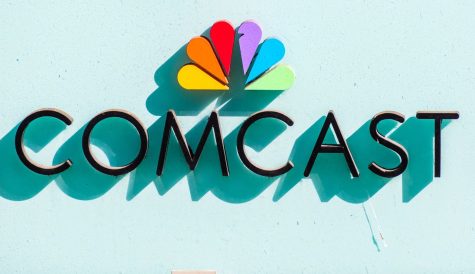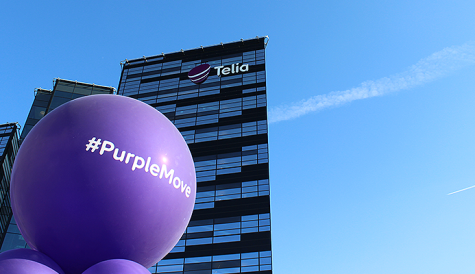Tough times for Paramount
 Those of us who live in the UK and follow politics a few years ago became familiar with the wonders of “having your cake and eating it” – the alchemical achievement of continuing to possess something while consuming it.
Those of us who live in the UK and follow politics a few years ago became familiar with the wonders of “having your cake and eating it” – the alchemical achievement of continuing to possess something while consuming it.
We’ll get back to cake-eating shortly. First, the news. Paramount this week saw its share price plummet after weaker-than-anticipated first quarter results that also saw it cut its dividend from 24 cents to only five.
Revenue missed expectations due largely to weakness in the ad market and lower than expected revenue from the studio business.
Operating income before depreciation and amortisation (OIBDA) fell by significantly greater than expected, and free cash-flow loss widened.
CEO Bob Bakish glossed the results as the outcome of “navigating a challenging and uncertain macroeconomic environment”.
So far, so bad. The bright spot in an otherwise bleak earnings announcement was the Paramount+ streaming business. Streaming revenue at US$1.51 billion (which also includes the advertising-led business of Pluto TV) was highly respectable, and the OIBDA loss from streaming – US$511 million – was less than anticipated.
Even better, Paramount+ added 4.1 million subscribers, outperforming Netflix by a factor of two. However, the growth is decelerating from 10 million adds recorded in Q4, and those better-than-expected streaming losses are still rising.
Bakish noted that Paramount is currently at the point where “the combination of peak streaming investment intersects with physical ad softness” and highlighted the importance of keeping costs under control and divesting non-core assets – notably publishing outfit Simon & Schuster – while building streaming revenue.
Planned combination
Streaming remains central to Paramount’s growth narrative, as the US legacy cable business declines. The key storyline for Bakish currently is the planned combination of Paramount+ with Showtime in the US, which brings us back to having your cake and eating it.
On the Paramount investor call, Bakish said that he was “thrilled to begin to bring the integrated Paramount+ with Showtime product to market this summer – a game changing multi-platform offering” – albeit one that currently lacks an international dimension.
CFO Naveen Chopra added that he expected “subscription revenue growth to continue over the next several quarters aided in part by the integration of Showtime and Paramount+”, albeit after a “seasonally soft” Q2.
Subscription growth from an improved offering that is designed to deliver scale and better enable Paramount to compete with larger streaming rivals is having your cake. The cherry on top is the boost to revenue expected from the potential for future price hikes.
The eating it part comes from a cost-saving bonus – as well as, more broadly, making money from the same content several times. “We’re capturing US$700 million of future annual expense savings through the integration of Showtime and as we progress through the integration, we’re increasingly confident about our ability to get even more from our core franchise content investments and believe we will ultimately capture more [savings],” said Chopra.
Answering an analyst question, he expanded on the theme by noting that cost savings would be delivered by sharing content across platforms, helping to maximise return on investment. He said that Paramount could lean even more than in the past into content franchises that are “fundamentally more cost-efficient” and noted that Paramount “had never abandoned licensing” as an additional revenue stream.
“We’re always looking for ways to be even more efficient with content spend that’s one of the reasons that we decided to integrate Showtime and Paramount+,” he added. One result is that direct-to-consumer content costs should be “less than we originally intended” next year.
“We’re not stopping there,” he said. Those cost-efficient franchises will loom even larger on the slate, along with more cost-effective unscripted programming and international production.
Paramount has already spent a huge amount on combining the two streaming offerings. Scale is seen as essential in the streaming business and Paramount is always at risk of being seen as an also-ran compared to its larger rivals. That “not abandoning licensing” line also highlights Bakish’s caution about throwing all available ingredients into baking the streaming cake, where the company remains at a disadvantage.
Paramount seems to be trying to “have its cake and eat it” in two ways – achieving scale in streaming while mitigating costs, and doing the same while continuing to spread its bets through third-party licensing. The danger remains that lack of a clear direction will simply confirm its position as an also-ran in the streaming wars.



